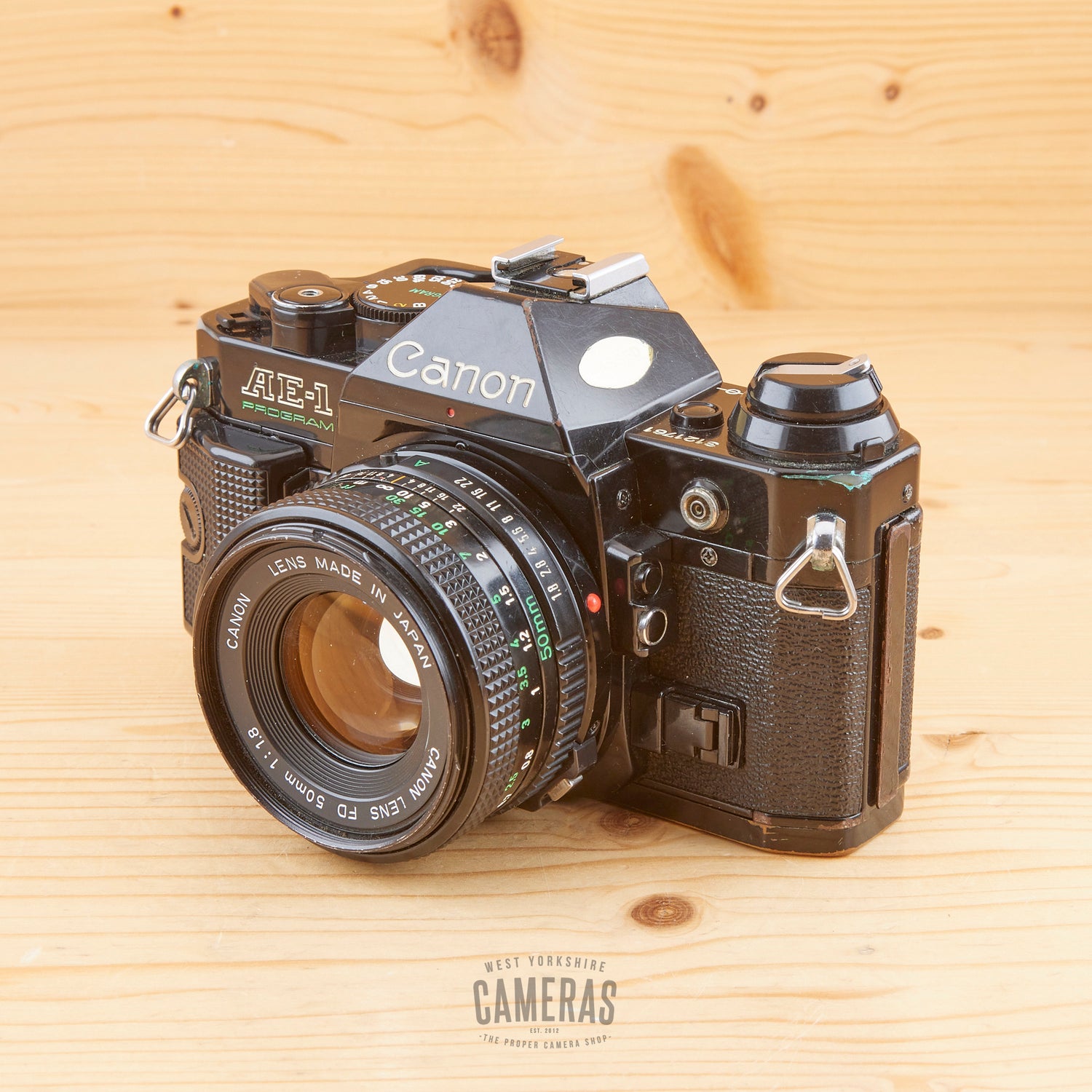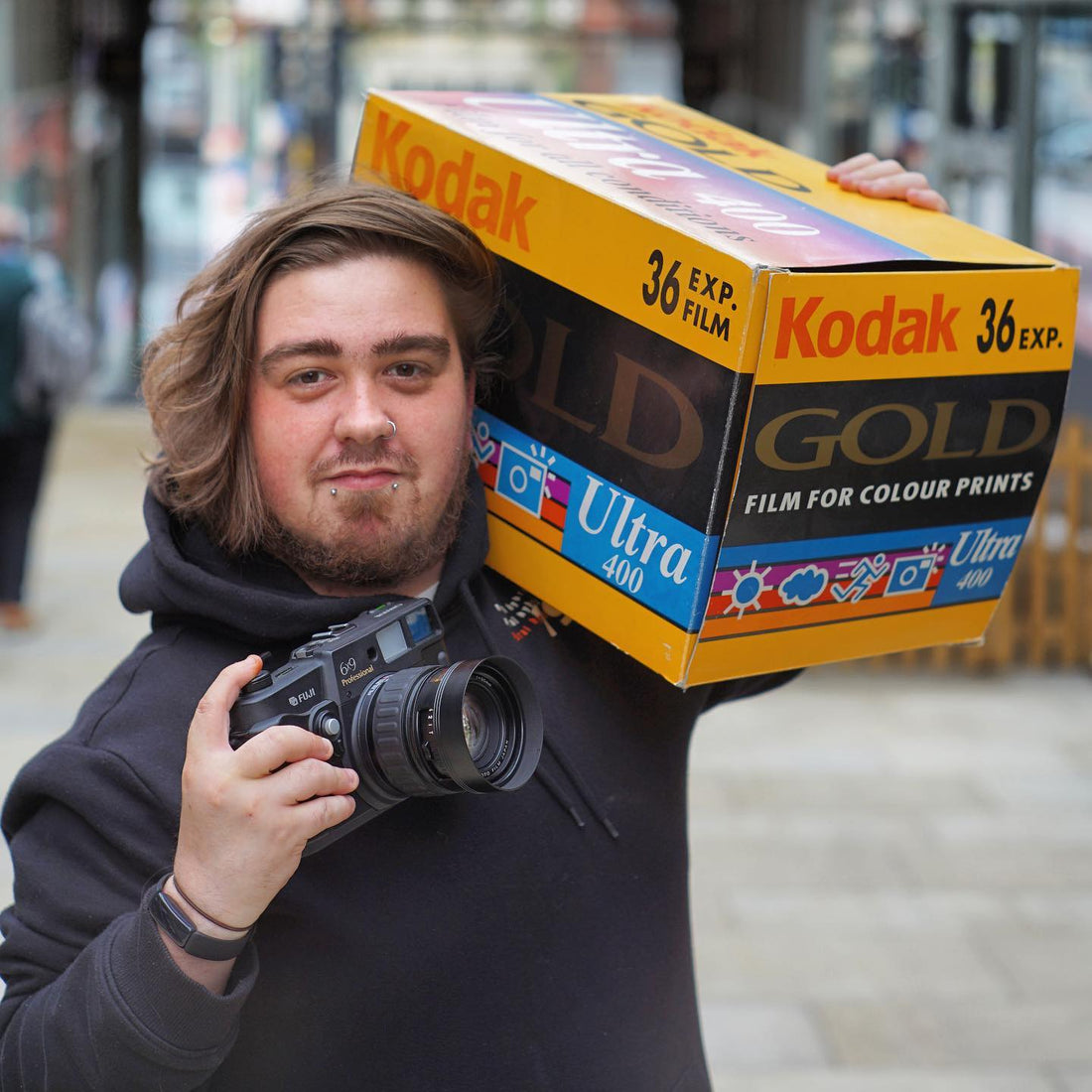Nowadays, it feels like the cost of buying, processing and shooting film keeps increasing. Kodak seems to be hiking its film prices weekly, the cost of developing photos keeps creeping up and even an entry-level point and shoot can set you back an eye-watering amount. But we believe that analogue photography should be for anybody with any budget.
In this post, we’ll show you how you can still shoot film for less than £100. Our cost-friendly budget will set you up with a camera, some film and developing your negatives. So, if you’re looking for a way to shoot film without resorting to only eating baked beans and bread sandwiches for the rest of the month, read on.
What film cameras are cheap?

We’ll begin by discussing the first thing you’ll need to take photos - a camera.
An inexpensive SLR with a 50mm lens is what we’d recommend to start with. These cameras are straightforward to use and easy to find. Look out for the following, which are usually found for around £30-60 - even when fully checked and guaranteed from dealers like us.
- Praktica LTL, MTL or Nova Series
- Ricoh KR series
- Fujica ST or AX series
- Cosina CT Series
Even Cheaper:Instead of splashing out on an SLR, go bargain-hunting for a basic viewfinder camera. There are hundreds of variations, and can usually be found in working order for less than £20-30. We suggest taking a look at:
-
The Kodak Retinette series
-
The Voigtlander Vito series
-
A Russian “Lomo” camera - such as the Cosmic Symbol.
If you’re a complete beginner, these more basic cameras can be a little challenging to get to grips with. If you’re more experienced, or prepared to experiment, they’re still capable of great photos
Pro-tip: Avoid cameras that use discontinued film. You may stumble across cameras that use types of film that are difficult - or impossible - to buy. The Minolta Vectis, Nikon Pronea or Kodak Advantix cameras use APS film, which is no longer available. Certain old Kodak Instamatic and folding cameras also take totally discontinued 126 and 620 film.
If you’re not sure, we suggest using a resource like Camera Wiki to find out what film it takes. Double-check and ensure that film is still available before you consider purchasing.

What's the cheapest film?
Whilst we’re on the subject of film, we’ll give you some hints on how to keep costs as low as possible. Shooting black-and-white and buying ‘bulk rolls’ are two of the easiest ways to stop your bank account grumbling.
If you’ve been shooting film for a while, it will come as no surprise that we’re recommending black-and-white as the best budget option. Colour film is getting more expensive, and supply is struggling to keep up with demand. In contrast, rolls of standard black-and-white film are cheap and in plentiful supply.

- To get started, try Fomapan 200 or Kentmere 400. These 36-shot films can be purchased for as little as £5 per roll.
If you’re feeling especially thrifty, you can reduce the cost of film even more by purchasing a bulk roll. A bulk roll is a whopping 30.5m long, which means you can cut the bulk roll up and load it into 18 regular 36-shot cassettes. So, purchasing a ~£50 bulk roll of Fomapan, you’ll only spend around £3.00 or less per 36-shot roll of film. However, bulk loading incurs the one-off upfront cost of investing in a loader and some reloadable cassettes. Having said that, the loaders and cassettes can be found on the used market at pretty reasonable prices.
Even Cheaper: Expired film. You may not know this, but film has an expiry date! A few years after manufacture, the chemicals can lose their properties and the quality of the final image can be affected. For a film to be unusable takes decades, so most old rolls from the 90’s and 00’s will still be perfectly usable. Instead of buying film fresh, keep a lookout on the second-hand market for old rolls of expired film. Whilst not a foolproof strategy (because some sellers seem to think that film ages like wine, and will try to charge daft money for expired rolls), with patience you should find a few bargains. Finding a cheap bulk roll would be a jackpot indeed!

What's the cheapest way of processing film?
Once you’ve taken your photos, there are two ways to develop your pictures. You can either send your film off to a lab - or do it yourself at home.
You can send your finished film to a lab - like our friends down at Take It Easy - and they’ll take care of the whole process, including the developing and scanning / printing. It varies depending on a few factors, including type of film and quality of the finished photos - but let’s say on average this costs around £10 per roll. A lab is likely to have much more
As well as a full scanning and printing service, most photo labs have the option of an inexpensive ‘develop-only’ service for around £5 per roll depending on the lab and type of film. This means they’ll just develop the film and they won’t scan or print from the negatives. So you’ll need to finish off the process yourself to get the final pictures.
When it comes to scanning your negatives, you can either use a dedicated film scanner or a flatbed scanner. A dedicated film scanner is the most budget-friendly option (very basic models can be found for as little as £25), but the image quality from these much cheaper units is not great. A better option - in our opinion - is investing in a flatbed scanner with the ability to scan negatives. For the best value for money, keep an eye out for the older Canon or Epson models - both of which can be found second-hand for around £50. It’s worth noting that older scanners may need specific software like SilverFast or VueScan to function- so you might need to do some faffing around with your computer to get them going.
If you decided to invest in a scanner or an enlarger, you will surely want to try your hand at developing too!

Even cheaper: Developing film yourself is an enjoyable, and very cost-effective process. In addition to the special items listed below, you’ll also need a few jugs, a thermometer and some other sundry items that you may just have around the house already.
- A developing tank - a second-hand Paterson tank costs between £5 and £10.
- Ilfosol Developer 500ml at £12.50 - if used at a dilution of 1:14, 22 rolls of 35mm film should (in theory) only cost 58p to develop per roll.
- Ilfostop Stop Bath 500ml at £9 and Ilford Rapid Fix 500ml at £12.50 - both of which can be diluted and reused quite a few times before needing replacing.
Once the film is successfully developed and dry, we recommend keeping them safe in Kenro Negative Sleeves - a pack of 25 sleeves is around £10 but can be bought in larger quantities for greater economy.

Be patient, and be prepared to learn.
Ultimately, shooting film on a budget requires patience, persistence and practice. It may take time for your ideal camera, scanner or developing tank to crop up in your preferred condition and price range. That’s fine. Just wait. Analogue photography is always reminding us to slow down anyway, so there’s no need to rush.
In the meantime, feel free to brush up on your photography basics or check out how we got into photography ourselves over on our staff interviews:
By Howard Parker and Ethan Delgado. Images by Daniel Walsh.


